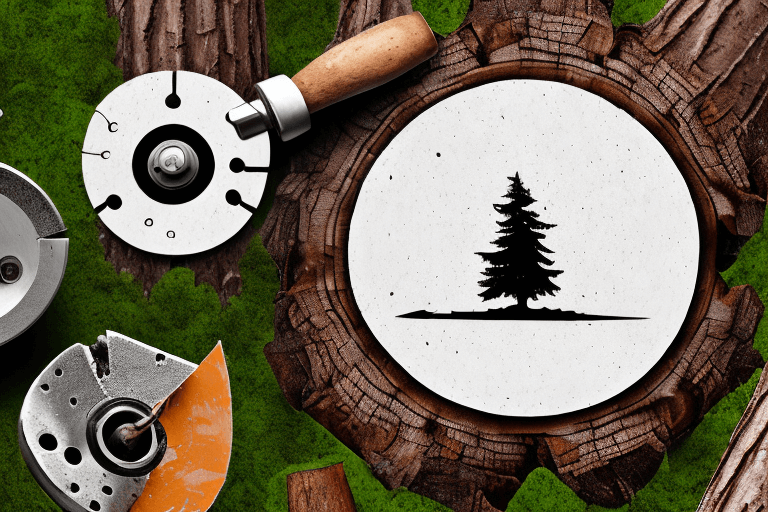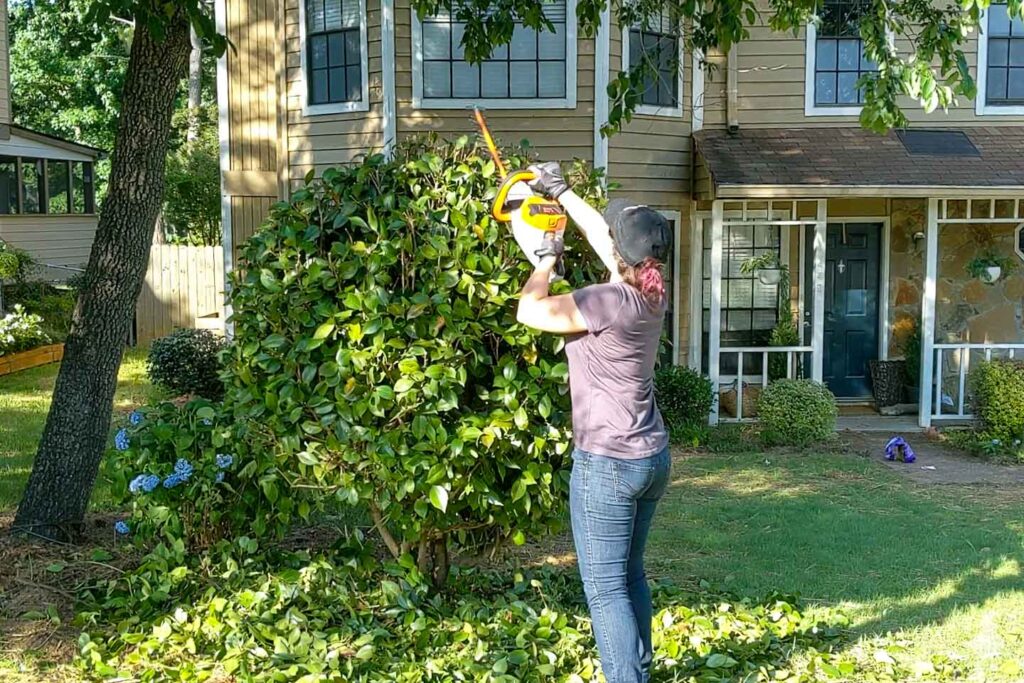When it comes to expert tree pruning, it’s not just about randomly cutting branches. It’s an art and a science that requires knowledge and skill. Understanding the basics of tree pruning is the first step towards shaping your canopy effectively.
Understanding the Basics of Tree Pruning
Tree pruning is the process of selectively removing specific branches or stems from a tree. It is done for various reasons, including improving tree health, promoting growth, enhancing aesthetics, and managing risk with assistance of tree pruning services near me. But why is tree pruning so important?
The Importance of Tree Pruning
Proper pruning helps maintain a tree’s structural integrity by removing weak or damaged branches. By doing so, it reduces the risk of falling limbs, which can be hazardous to people and property. Additionally, pruning promotes air circulation and sunlight penetration, leading to a healthier and more vibrant canopy.
But there’s more to tree pruning than just the immediate benefits. When done correctly, pruning can have long-term positive effects on the tree’s overall health and longevity. By removing dead or diseased branches, pruning prevents the spread of infections and infestations, protecting the tree from further damage. It also stimulates new growth by encouraging the development of dormant buds, resulting in a denser and more robust canopy.
The Science Behind Tree Growth and Pruning
To understand the science behind pruning, we must delve into how trees grow. Trees have a natural growth pattern, with the main stem reaching for light and the branches spreading out to maximize photosynthesis. Pruning disrupts this pattern and redirects growth to specific areas, resulting in a more balanced and desirable shape.
But how does pruning achieve this redirection? It all comes down to the tree’s response to injury. When a branch is pruned, the tree activates its defense mechanisms, triggering the growth of new branches and leaves near the pruning site. This response is known as compartmentalization, where the tree forms specialized tissues to seal off the wound and prevent the spread of decay.
When pruning, it’s crucial to consider the tree’s growth habits, species characteristics, and desired outcome. Certain trees, like evergreens, may require different pruning techniques than deciduous trees. By understanding these nuances, you can achieve optimal results.
Furthermore, timing plays a significant role in the success of tree pruning. Different trees have different growth cycles, and pruning at the wrong time can have detrimental effects. For example, pruning during the dormant season allows the tree to conserve energy and heal more efficiently. On the other hand, pruning during the active growing season can stimulate excessive growth and weaken the tree.
In conclusion, tree pruning is not just a simple act of cutting branches. It is a science that requires knowledge, skill, and careful consideration. By understanding the importance of pruning and the science behind it, you can ensure the health, safety, and beauty of your trees for years to come.
Tools and Techniques for Effective Tree Pruning
Now that you understand the importance and science behind tree pruning, let’s explore the tools and techniques needed for effective pruning.
When it comes to tree pruning, having the right tools is essential. A good pruning saw, hand pruners, loppers, and pole saws are all indispensable for removing branches of various sizes. However, it’s not just about having the tools; it’s also about taking care of them. Keeping your tools clean and sharp is crucial to ensure clean cuts and minimize damage to the tree. Regularly cleaning your tools with a disinfectant solution can prevent the spread of diseases from one tree to another. Additionally, sharpening your tools regularly will make pruning easier and more efficient.
Now, let’s delve into some advanced pruning techniques that can help shape and train your trees for optimal growth. While basic pruning involves removing dead or weak branches, advanced techniques take it a step further. One such technique is crown thinning, which involves selectively removing branches to improve light penetration and air circulation within the tree’s canopy. By doing so, you can promote the overall health and vigor of the tree.
Another advanced technique is crown raising, which focuses on raising the lower branches of the tree. This is particularly important in areas where there is pedestrian or vehicular traffic. By raising the lower branches, you create clearance, ensuring that people or vehicles can pass safely underneath the tree without any obstructions. Crown raising can also enhance the aesthetic appeal of the tree, giving it a more balanced and visually pleasing appearance.
Lastly, crown reduction is a technique used to reduce the overall size of a tree. This is often done when a tree has outgrown its space or poses a potential hazard. By selectively removing branches from the outer edges of the crown, you can reduce the tree’s height and spread. Crown reduction not only makes the tree more manageable but also improves its structural integrity, making it safer during storms or high winds.
So, whether you’re a professional arborist or a passionate tree enthusiast, understanding and implementing these tools and techniques will help you achieve effective and successful tree pruning. Remember, proper pruning not only enhances the health and beauty of the tree but also contributes to the overall well-being of the surrounding environment.

The Art of Shaping Your Canopy
Tree pruning isn’t just about technical skills; it’s also an art. Shaping your canopy requires a creative eye and an understanding of how a pruned tree will look and evolve over time.
Visualizing Your Canopy
Before you start pruning, visualize how you want your canopy to look. Consider factors such as its overall shape, branch density, and clearance. A well-shaped canopy not only enhances the aesthetics of your landscape but also ensures the tree’s long-term health and structural integrity.
Imagine a majestic oak tree with a wide, symmetrical canopy that provides a welcoming shade on a hot summer day. Picture a graceful willow tree with cascading branches that create a serene atmosphere in your garden. Visualizing these desired outcomes will guide your pruning decisions and help you achieve the perfect shape for your canopy.
Techniques for Shaping and Balancing
Once you’ve visualized your ideal canopy, it’s time to put your pruning skills to work. Start by removing dead, diseased, or crossing branches. This not only improves the tree’s appearance but also promotes its overall health and prevents the spread of diseases.
As you carefully assess the tree, you’ll notice areas where the branches are densely packed, creating an imbalance in the canopy. To achieve a balanced and aesthetically pleasing shape, selectively thin out these crowded areas. By removing some branches, you allow more sunlight and air to penetrate through the canopy, promoting better growth and reducing the risk of fungal infections.
However, it’s important to strike a delicate balance and avoid over-pruning. Removing too many branches can weaken the tree’s structure and make it more susceptible to sunburn or stress-induced diseases. Remember, a well-shaped canopy is not only visually appealing but also supports the tree’s overall health and longevity.

Seasonal Considerations for Tree Pruning
Timing is crucial when it comes to tree pruning. Pruning at the right time of year can maximize the benefits and minimize the risks. However, there are a few more factors to consider when planning your pruning schedule.
Best Seasons for Pruning
In general, it’s best to prune deciduous trees during their dormant period, which is typically in late winter or early spring. Pruning during this time allows the tree to heal wounds quickly while minimizing the stress on the tree. During dormancy, the tree’s energy is focused on root development rather than leaf production, making it an ideal time for pruning.
However, it’s important to note that not all deciduous trees follow the same pruning schedule. Some species, like maple and birch, are prone to excessive sap bleeding if pruned in late winter or early spring. For these trees, it’s best to wait until late summer or early fall when sap flow has slowed down.
On the other hand, evergreen trees can be pruned throughout the year, although spring and summer are preferred. Pruning in spring allows the tree to recover and grow new foliage before the harsh winter months. Summer pruning, on the other hand, can help shape the tree and remove any unwanted growth.
Weather Impacts on Pruning
While considering the timing of pruning, it’s essential to take weather conditions into account. Avoid pruning during excessively wet or dry periods, as these conditions can have negative impacts on the tree’s health.
Pruning during wet conditions can create open wounds that are susceptible to fungal infections. The moisture promotes the growth and spread of diseases, potentially causing long-term damage to the tree. It’s best to wait for drier weather to ensure optimal healing and minimize the risk of infection.
Conversely, pruning during extremely dry periods can add stress to the tree. When the tree is already struggling to find enough water, pruning can further deplete its resources and weaken its overall health. It’s advisable to wait for more favorable weather conditions, when the tree is better equipped to handle the stress of pruning.
Lastly, freezing temperatures can also impact pruning. When the wood is frozen, it becomes more brittle and prone to damage. Pruning during freezing temperatures can lead to splintering and breakage, causing harm to the tree. It’s best to wait for milder weather to ensure a successful and safe pruning session.
Safety Measures in Tree Pruning
While tree pruning can be rewarding, it’s important to prioritize safety to prevent accidents and injuries.
Personal Safety Equipment
Always wear the appropriate personal protective equipment (PPE) when pruning trees. This includes gloves, safety glasses, a hard hat, and sturdy footwear. PPE protects you from falling debris and minimizes the risk of injury.
Safe Pruning Practices
Follow safe pruning practices to ensure your well-being and the health of the tree. Start by assessing the tree for potential hazards, such as power lines or unstable limbs. Use proper pruning techniques, including making clean cuts just outside the branch collar and avoiding leaving stubs. Finally, never prune trees near power lines unless you are a trained professional.
By following these safety measures, you’ll be able to enjoy the fruits of your labor without compromising your well-being.
In conclusion, shaping your canopy through expert tree pruning requires both artistry and scientific knowledge. Understanding the importance of pruning and the science behind it is crucial for achieving the desired outcome. Equipped with essential tools and advanced techniques, you can shape your canopy to perfection while considering the seasonal and safety aspects of pruning. Remember, a well-pruned tree not only enhances the aesthetics of your landscape but also ensures the long-term health and structural integrity of the tree itself. So, get ready to embark on your tree pruning journey and let your artistic side shine!
Related: How Tree Pruning Enhances the Vitality of Your Landscape
